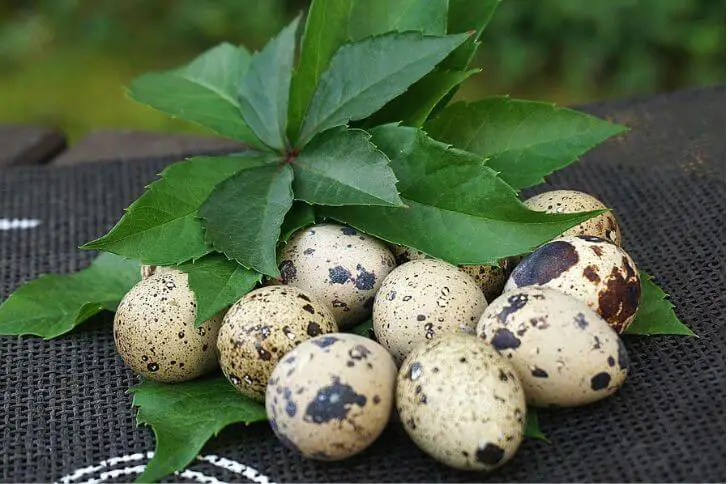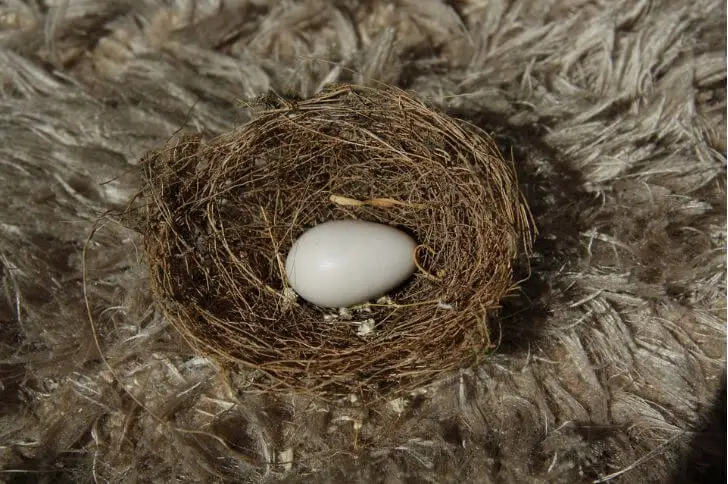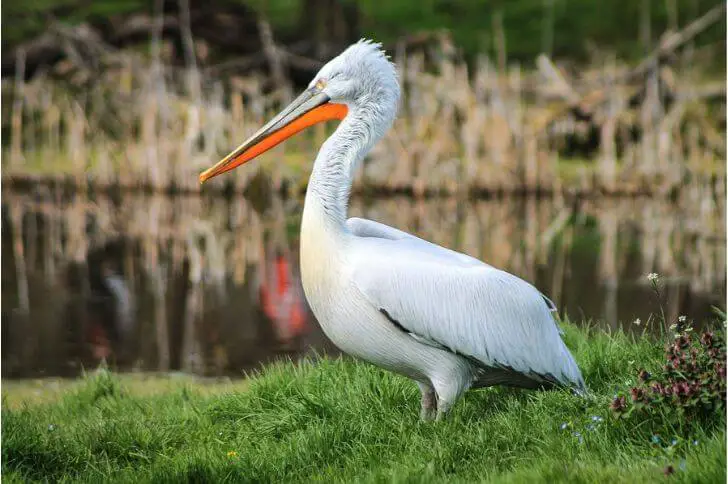The Black-crowned Night-Heron is a species of small heron that can be found in all continent; except Antarctica. Adults have a black caps and backs with grayish wings and tails. Their necks and chests are all white while the bellies are pale gray. Like the American Bitterns, they have a hunched look even in flight.
During the breeding season, adult black-crowned night-herons gather in colonies; a single colony can last up to 50 years.
Breeding Location
The night heron is an adaptive bird that prefers to build nests in trees in a variety of habitats including marshes, swamps, wet meadows, and riversides. The size of these colonies can range from just a few pairs to several hundred pairs depending on the availability of food sources and nesting sites.
Also a colony may have the night herons only or maybe a mix of different birds in this family; egrets, night herons, gulls and ibises. Like American Bitterns, the male of this species initiates the nest building process. He then finds a suitable female night heron and passes the construction work to her while he sources for materials.
How big is a black-crowned night-heron nest? Typically it measures 12-18 inches across and up to 12 inches high. Nest is mostly made of sticks.
What time of the year do Black-crowned Night-Herons have babies?
Generally speaking, these birds start breeding in late April or early May and it can last through July depending on the region. The best time to spot newly hatched chicks is usually in late June or July when the young ones have grown enough for their parents to bring them out into public view. Also, night herons migrate to breed in the northern states.
Nesting period is also interesting. Night herons lay 3-5 eggs, sometimes up to 7. The greenish blue eggs are about 2.2 inches in length; slightly larger than most blackbird eggs but smaller than kiwi bird eggs. Incubation may last up to 26 days.
Juvenile Identification
When newly born, night heron babies are helpless but like the great blue heron babies, their eyes are open and are covered by grayish down.
With proper care from their parents, these babies will grow quite large within a few weeks and grow juvenile feathers.
What does a juvenile Black-crowned Night-Heron look like? Young night herons are generally grayish brown with white spots on the back and wings. They have a yellow and black bill and greenish- yellow legs.
If you’ve read this article on immature yellow-crowned night-herons, you’ll notice young night herons have a lot of similarities which makes it hard to tell them apart.
However, when in flight, this night heron tucks its feet, making identification easy. Also, the black-crowned juvenile has duller streaks. This young bird can also be identified by its distinct call, which is a loud “quok”.
What do immature Black-crowned Night-Herons eat
Fledglings eat a wide variety of food items as they grow into adulthood. A closer look at these fascinating birds reveals that their diet includes aquatic insects, crustaceans, mollusks, fish, frogs and snakes.
In addition to these prey items, juvenile black-crowned night herons will also feed on carrion or scavenge from dead animals in order to supplement their diet. They have even been observed consuming eggs from other bird species during times when food is scarce.
Like other heron babies, immature night herons are fed by their parents through regurgitation. An adult will place food in the middle of the nest and young birds will fiercely compete for meals. As they age, juveniles follow their parents to foraging grounds to beg for food and also learn how to forage.
Leaving the Nest
How long does it take before Black-crowned Night-Heron juvenile leaves the nest? Night herons typically leave the nest within three to four weeks after hatching. However, they remain close to their parents for up to six weeks while they learn important skills like hunting and flying. During this time they rely almost completely on their parents for food until they are able to catch small prey on their own.
First Flight
Research shows that young black-crowned night-herons typically take between 6 and 7 weeks before they can take flight. During this time, the juveniles practice flapping their wings while perched on branches or nearby trees. The adults may also give them guidance as they learn to hunt and feed themselves in preparation for migration season. After mastering the basics of flight, juveniles will then migrate with other members of their species.
Do Black-crowned Night-Herons return to the same nest every year?
These herons are known as ‘site faithful’ creatures, meaning they often return to nests they used in previous years. Though there is evidence to suggest these birds migrate, they usually stay within their home range and use the same nesting sites season after season. They’ll just add more material to their existing site.
Do Black-crowned Night-Herons mate for life?
Studies have shown that these birds will typically form monogamous pairs throughout their lifetime.
Maturity
Immature night herons reach maturity at 2 years. At this stage the bird undergoes change in their plumage from juvenile to adult coloring.
Common Predators
The black-crowned night-heron’s primary predators include hawks, owls and other large birds of prey. These raptors will often snatch small adult or juvenile herons from their nests or while they are feeding at night. Other carnivorous mammals such as racoons may also target this species when the opportunity arises.
How many babies do Black-crowned Night-Herons have?
Their clutch typically consists of 3-5 babies and sometimes up to 7. Like other large water birds, they raise one brood per season.
Lifespan
How long do Black-crowned Night-Herons live? The average life expectancy of these herons is around 20 years, though they can reach up to 23 years in captivity or with proper care. In the wild, they may survive longer if they have a reliable food source and safe nesting sites. The oldest recorded wild Black-crowned Night-Heron was 21 years old.
Are herons intelligent
Herons are some of the most graceful animals in nature, and they are also admired for their intelligence. Though they might not be as intelligent as crows or parronts, herons show signs of being able to problem solve and remember certain behaviors. Recent research has revealed that these birds possess a high level of intelligence that can be attributed to their long lifespans, complex social structures, and sophisticated hunting strategies.
For example, herons have been observed using tools like sticks to bait fish out of hiding spots. Its behavior is also significantly impacted by external factors such as weather conditions- suggesting an ability to think ahead and plan accordingly.
Where do herons go when it rains?
Night herons will retreat to nearby trees or shrubs as shelter from the rain. They also seek out sheltered areas along bodies of water such as rivers and lakes or even man-made wetlands to stay dry during storms. They huddle close together in small groups or pairs with their wings tucked against their sides while they wait out the bad weather.
Final thoughts:
Black-crowned night-herons populations are stable. They can be found on different continents except Australia and Antarctica. If you live in North America you can spot them in the south during non-breeding season and the north during nesting season. Black-crowned night-herons juveniles have different plumage from adults and take about 2 years to mature.
Source:
https://sora.unm.edu/sites/default/files/journals/condor/v084n02/p0184-p0187.pdf
https://en.wikipedia.org/wiki/Black-crowned_night_heron
Hi, my name is Steve. My friend and I started the spanishbirdguides.com to share our passion with other like-minded people. So, if bird watching is your thing, you’ll love this blog. I’ll share what I’ve learnt about both local birds and those found in other parts of the world. Also, I’d love to hear your experiences.


